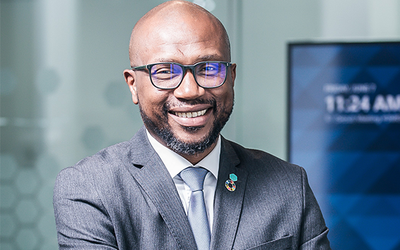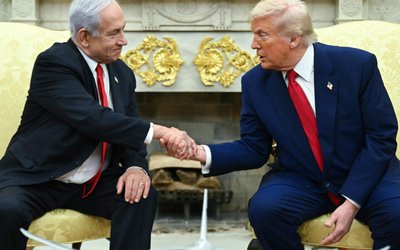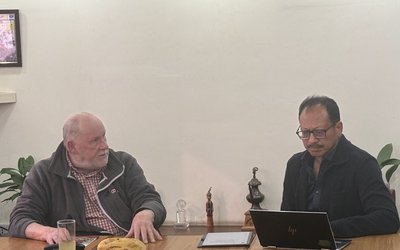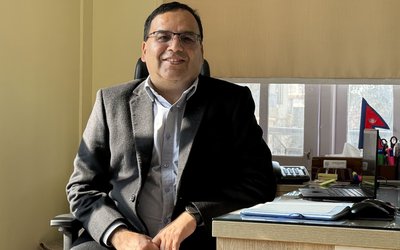More on Interview





Nepal has been facing a severe power crisis, what plans do you have to end load shedding?
Although it is not possible to end loadshedding within a few days or months, there is definitely some way out. Given proper and targeted planning, we can address the present power crisis. What I am doing now is to complete the projects, which are in the last stage of completion and increase their capacity. As it is pronounced by the concept paper of National Power Crisis Alleviation Decade and action plan 2015, my aim is to eradicate load shedding within two years. For this, we are now working to add 1450 MW power in the grid, which include 850 MW from NEA and its subsidiary companies, 400 from private sector and 200 MW from solar and other alternative sources. We also increase our import from India up to 600 MW.
At a time you have presented such an ambitious plan, many projects run by Nepal Electricity Authority and its subsidiary are facing one or other kind of problems. How do you settle them?
I know problems are there. What we need to do is to settle them. For instance, I have already asked the two contractors, Korean and Chinese, to resume the work and complete 36 MW Chameliya Projects by January. I have also asked the contractor of 12 MW Kulekhani III project to complete the project in time. Following almost a year of disruption of the work in 407 MW Upper Tamakosi, the project will take off after Dashain in full swing. I have also directed the authority of Chilime Power Company to accelerate their projects under construction. Similarly, 60 MW Trishuli III A will also resume its construction work soon.
What is your long-term target?
Our long-term target is to generate 10,000 MW of power by 2026 and prepare the plan for the construction of another 30,000 MW power projects. We are also planning to develop 10,800 MW Karnali Chisapani as a SAARC level project. While developing the projects, our priority is for the storage, peaking and run of the river. We are giving priority to storage projects like Budhi Gandaki, Nalsing Gad, Uttar Ganga, Dudh Kosi, Tamor, Sunkosi III, Tamakosi III, Khimti Those, Langtang, Naumure, West Seti and picking projects like Upper Arun, Arun IV and lower Arun. We will also give priority to the projects run by private sector as well.
How do you generate resources?
Our priority will be to mobilize the optimum level of resources available in the country. There is enough liquidity in the commercial banks, government owned financial institution, banks and provident fund. Funds will also be generated by issuing IPO for Nepalese working abroad, teachers, civil servants, labors and common people. The government is considering to announce policy to use the money from mobile and remittances. These resources will be used to construct Upper Arun, Dudh Kosi,Tamor, Kosi III, Langtan Nalsign Gad, Uttar Ganga, Naumule and Tila 1.
What about Budhi Gandaki and Tamakosi III and West Seti?
The government will seek foreign investment for Budhi Gandaki and Tamakosi III. Since these two projects require a huge investment, the government will itself develop these projects on its own with foreign investment. So far as West Seti is concerned, the government is planning to construct it under Public Private Partnership.
Is there enough money?
Our studies have recently shown that there are enough deposits in the commercial banks now. Recently, I invited all the CEOs of commercial banks and discussed about their financial position in investing in the hydropower sector. The bankers have told me that they will have enough money to invest in the power projects up to 500 MW annually. This is a big money. The institutions like Hydroelectricity Investment and Development Company Ltd (HIDCL) will be mobilized. The IPO will be issued to broaden the representation of people of HIDCL. My aim is to see no individual, who can apply for share in hydro power, should not return empty hand.
Under the present provisions, your ministry cannot take big projects above 500 MW as they lie under the purview of National Investment Board. How do you look at this?
National Investment Board is also a part of the government. If the government wants to do it, it can manage it. There is no one above the government.
It is reported that the government is also planning to hand over some power to security forces particularly Nepal Army. How true is it?
We are proposing a project for the security forces, including Nepal Army. The model hydropower project will be constructed issuing the shares to members of all security agencies. This kind of work will also help to build the capacity of Nepal Army in constructing the hydropower projects.
How do you address the issue raised by Independent Power Producers, who have been facing the problems of Transmission Line?
It is good to know that 50 MW Upper Marsyangdi will finally commence its production shortly. I have already directed the concerned authority of NEA to complete a section of Transmission line to evacuate the energy of the project to national grid. Similarly, I am also taking stock of other transmission lines which are creating problems to evacuate the energy from the projects. Our first and foremost challenge is to complete the ongoing transmission line in time.
Foreign companies cannot invest money till Nepal signs the PPA on US$ and there is a big group of opposition. How do you settle the issue?
When we are in the process of implementing such mammoth projects in transmission and hydropower projects, Nepal needs foreign investment in foreign currency. If a foreigner comes to invest in foreign currency, they want repatriation of their money in foreign currency. Of course, there is risk in signing the PPA in US$ because of fluctuation of US$ against Nepali currency. However, we don’t have other option either. The government will set up an appropriate mechanism like Hedging Fund to reduce the risk in currency exchange fluctuation.
As many foreign companies are waiting to come to invest in Nepal because of suspension on the US$ PPA, do you have any plan to ease it?
As I have already told you that there is the need of big foreign investment to meet our targets. NEA has to sign the PPA in US$ with foreign investors. For this, we must have to build the mechanism to reduce the risk. Hedging Fund will be good mechanism.
Do you mean, NEA will start to pay US dollar, PPA?
I have told you that there is no option. We will start soon but it will not be a burden for people and country anymore. No foreign and Nepali investor has to wait long in signing the PPA.
Then what about West-Seti project and signing PPA?
The West Seti Project will materialize. NEA is ready to take the share on the project.
As investors have complaining about the lengthy process of EIA, how can you solve EIA problems?
The current EIA process is creating a lot of problem. It is one of the major hurdles for early construction of the projects. We are talking with Ministry of Environment and Forest to take the necessary measures to reduce the present delaying process.
It is said that the present distribution system is too old and incapable to distribute the electricity to household. What plan do you have to improve them?
Studies have already shown that Nepal will face a major energy problem in household distribution system. Without improvement of distribution system, we cannot distribute the electricity to consumers generally. Thus, NEA needs to immediately start to improve distribution substation, transformers, wire and cable. NEA will announce distribution system master plan looking at long term demands. We are also planning to pilot progam in Kathmandu Valley for smart grid.
As all your predecessors, you have also announced to reduce the present state of leakage. What concrete plan do you have to reduce the leakage?
Of course, it is very difficult to reduce the technical leakage. However, we can control the household level leakage. There is a leakage of almost 140 MW equivalent electricity. Controlling the leakage means an equivalent of construction of a new project. By formulating the new working plan, the Ministry will take a high level initiative for this.
How do you see the recent electricity forecast made by National Planning Commission and Nepal Investment Board for coming twenty years?
First of all, I would like to remind you that only the Energy Commission can forecast the demand of the energy in the country. Energy Commission is responsible for this. The government cannot endorse such forecasting made by others. So far as such forecasting, the government is working to make the Commission more effective.
The private sector firms are complaining that they are facing a lot of hurdles due to the conditions stated in power purchase agreement. Do you have any plan to modify the situation.
The Ministry is working to pave the way for timely PPA and it will remove the conditions, which are creating problems for the private sector. We will decide the wheeling charge. The government will also make arrangements for the PPA with run off the river, Peaking Run of the River and Reservoir projects and make necessary arrangements to raise tariff on seasonal basis. The government will also see the tariff for solar and wind. The government will also table two bills related to electricity. The bill on regulatory commission and Energy Crisis Mitigating Bill will be tabled in the Legislature Parliament within two months.
Despite the commitments, the government is yet to establish the National Grid Company. When will it materialize now?
Grid Company has already been constituted and it will now start its work. For the construction of big transmission line and inter-country transmission line, there must be a national grid company. For instance, Nepal and India will build transmission lines to exchange the power. Along with the Dhalkebaharr-Mujafarpur, Duhabi Purnia, Bardghat/ Butwal-Gorakhpur Transmssion lines will be constructed.
Similarly, Nepal-China Kerung, Rasuwagadi-BharatpurTransmission line will also start.




